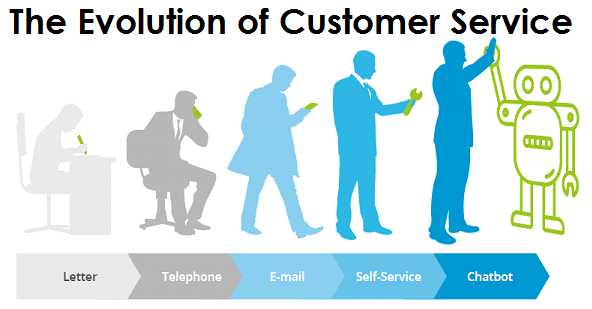The ways in which we communicate with businesses have undergone dramatic changes over the past several decades.
Customer service has evolved from the early days of rotary phones and call centers, when the phone was the only communication channel to the omni-channel world of today. Consumers can contact support via phone, live chat, WhatsApp, social media and even Amazon's Alexa. Nevertheless, only a few companies leverage all the available technology to serve customers.
Editors Note: This post was originally published in Nov. 2018 and has been updated

Customer Service in The Past
Many of us have less than fond memories about customer service in the past. We remember having to wait on hold for hours, only to be told that we needed to call back on a different day, or being given wrong information or speaking with a customer service agent who did not have the adequate knowledge to resolve our issue.
Customer service in the past can be defined as customer service that was most convenient for the company, during the time when the company found convenient (usually 9 - 5 EST) and that was available only on a single communication channel.
Lucky for them, customers did not have the benefit of instant communication via email, twitter, instant messaging and so forth. That meant a bad experience couldn't be shared with the masses. Today, that's no longer the case.
What Do Consumers Expect in 2019?
Simply put, customers expect customer service that is high quality, available 24/7 and in the channel most convenient to the customer! Customers who who have navigate automated IVR systems on the phone, write long emails or struggle with poorly made chatbots are likely to give up on their request and maybe even the company itself.
In a world where directions to anywhere, the answer to nearly anything and the ability to buy nearly anything is just a click or tap away, customer patience is an extremely limited resource (for better or worse).
Self-Service is In and Expected
Many customers today expect to be able to resolve simple customer service issues on their own, without having to communicate with a live agent. To this end, customers expect companies to offer self-service on their website to get their questions answered immediately. Critically, this is a customer-driven need, not something meant to make life easier for companies or deflect tickets (though it does).
If they can’t save the issue by themselves, because it is too complex, customers expect to communicate with customer service agents who have more knowledge about their problem and are able to resolve their issue quickly without transfers or call backs. It crucial that agents have access to a professional knowledge base that contains all of the knowledge that they may need to resolve any issue and are not left searching through various systems, folders and files.
Disorganized and out of date information has been a long-standing challenge for both agents and customers which can be easily solved by centralizing information on a single platform. And yet, many companies are still struggling to do so.
What is Omnichannel Customer Support?
Omnichannel customer support means not just offering support across multiple channels, but also enabling your customers to seamlessly switch between them. Channels can vary greatly and may include things such as, phone, email, chatbot, web self-service, social media, voice assistants and more. The purpose of omnichannel customer support is to make customer service easy and allow consumers to use their preferred channel (not yours!) all while maintaining consistent quality.
With omnichannel support customers are able to access assistance on the communication platform of their choice and when it’s most convenient or necessary for them. If they prefer to resolve their issue on their own then they should be able to use a self-service option such as chatbots. According to research done by Salesforce, companies that invest in robust multi-channel support see a significant increase in customer loyalty and retention.
Beyond 2020: The Evolution of Customer Service
The bottom line is simple, customers now and in the future prefer to do business with companies that offer user friendly, multi-channel customer support. Customers expect to be able to choose from a variety of channels as well as having the option to resolve their problem themselves through self-service. While many companies still struggle to get past technologies right, new ones such as augmented reality are already on the way. See our 5 trends transforming CX for more.
Take the first step to centralizing your internal support knowledge with Knowledge Center or get in touch to learn more.